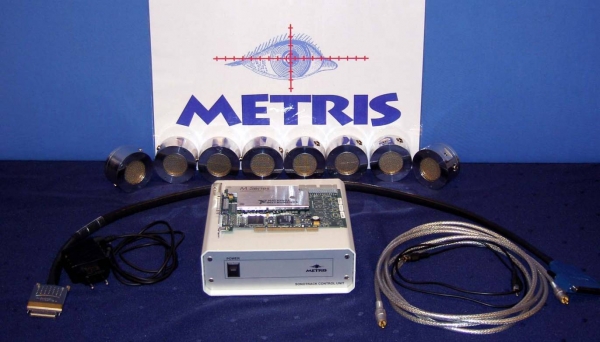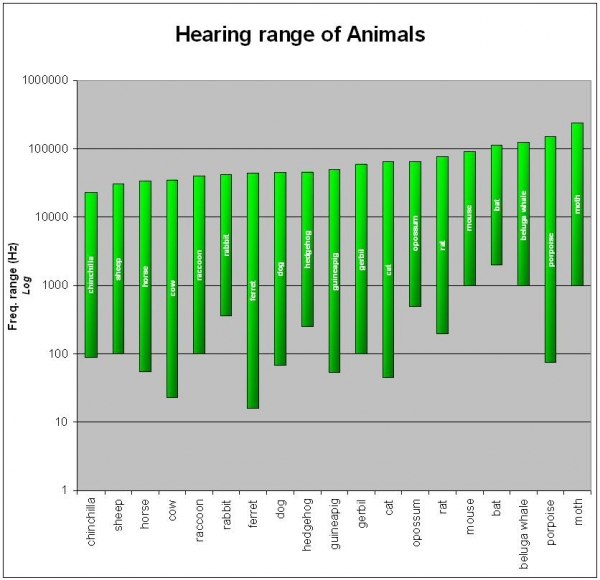Sonotrack product information
Introduction
SONOTRACK is a new and non-invasive measurement method to monitor and analyze ultrasonic sounds produced by (laboratory) animals. Unlike many other systems that are based on bat detectors, SONOTRACK uses special microphones and hardware that can pick up sounds in the frequency range of 15KHz to 125 kHz. The sounds picked up by the microphones are not only converted to audible signals but the “complete ultrasound signal” is also recorded in digital format.
The unique graphical presentations of the signals in the SONOTRACK software enables the user to analyze the sounds or "animal language" in much more detail than ever before. The innovative Ultrasound Vocalization (USV) detector enables automatic detection and counting of ultrasonic vocalizations of your animals. The batch processing function of the USV detector makes it possible to go through a large amount of measurements and provide you quickly the end points of your experiment.
It is this unique functionality, which can lead to a further refinement of your research, with the following advantages:
- New animal models involving the use of ultrasound as a measure for amongst pain, stress, depression, fear, anxiety, social interaction, sexual related behavior
- A decrease in the number of laboratory animals by shorter lead times and more consistent and reliable data
- Less discomfort, improvement/monitoring of animal welfare, and better living conditions for laboratory animals by using a non-invasive way of measuring.
How does it work?
 In contrast to most of the other systems on the market SONOTRACK is a so-called full spectrum recording system. It means that it digitizes and records the whole ultrasound band from 15kHz to 125kHz. In contrast most of the other systems are based on bat detectors that have to be tuned to a specific frequency range and can only receive a small band that is approximately 15kHz wide. In applications involving rodents that vocalize over a broad frequency range it is obvious that these bat detectors systems are unsuitable. In contrast to most of the other systems on the market SONOTRACK is a so-called full spectrum recording system. It means that it digitizes and records the whole ultrasound band from 15kHz to 125kHz. In contrast most of the other systems are based on bat detectors that have to be tuned to a specific frequency range and can only receive a small band that is approximately 15kHz wide. In applications involving rodents that vocalize over a broad frequency range it is obvious that these bat detectors systems are unsuitable.
The full spectrum recording technique makes it also possible to present the recordings in all kind of graphical presentations such as Sonograms which reveal a lot of information about the actual call or vocalizations of your animals.
To present detailed information about the recorded ultrasound signal, the following steps are applied:
- Amplification and analog filtering of the microphone signals
- Analog to digital conversion of the amplified and filtered sound signals
- Digital filtering of the sound signals (with user definable settings)
- Storage of digital data on hard disk (only when signals are present)
- Processing and presentation of the sounds signals in several domains.
Ultrasound Vocalizations
Ultrasound vocalizations (USV), sometimes also called Ultrasonic vocalizations are commonly referred to as sounds within the frequency range of 20 kHz - 100 kHz. This frequency range is well above the human range of hearing. However, it is well known that bats, dolphins, rodents and insects produce and hear USV as part of their behavior.

There is evidence that USV is used as a sensitive indicator of subtle emotional and motivational changes in a number of animals. Therefore, USV produced by animals in various conditions could be explored as a non-invasive method for registering the welfare status of an animal.
The use of USV to measure the welfare status of an animal can be advantageous in a number of situations:
- at a very early stage of an experiment it is possible to recognize discomfort whereupon pain relief can be administered;
- the effictiveness of the pain relief can be measured (monitored), and if necessary adjusted;
- as a parameter to determine the extend of discomfort or wellbeing;
- as a parameter in behavioral studies;
- as a monitoring system during transport and acclimatization
- as a monitoring system during normal housing conditions.
|
